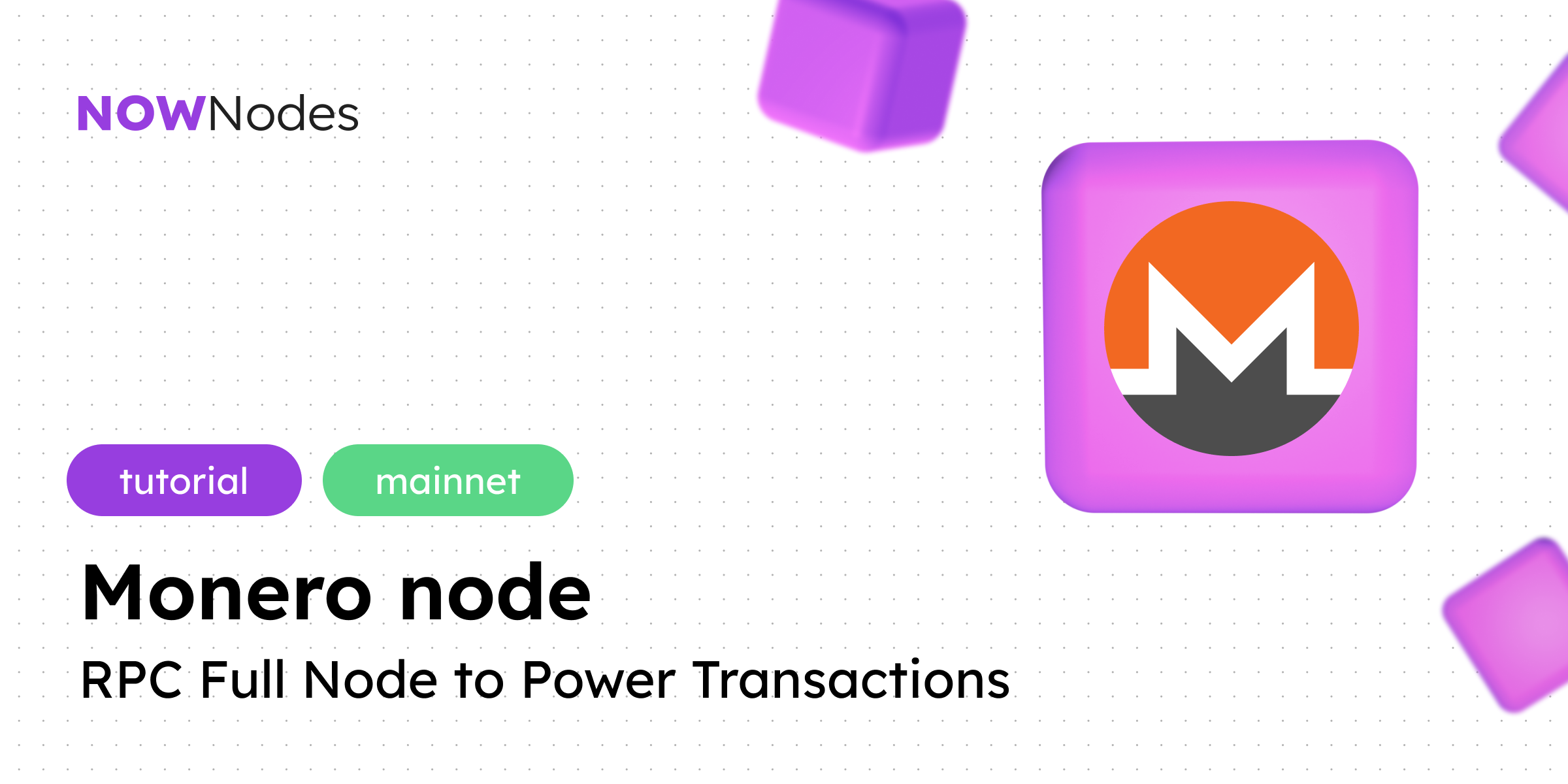Since its launch, Monero has become synonymous with cryptographic privacy. Unlike most public blockchains where anyone can trace the flow of funds, Monero’s network is built on principles of complete confidentiality, implemented directly at the protocol level. This architecture makes it resistant to external analysis and censorship, but it also imposes unique requirements for node operation and synchronization.
Monero Network Architecture
The Monero network is a decentralized peer-to-peer system composed of nodes that interact via a P2P protocol. Each node performs several essential functions:
- Receives and propagates transactions
- Verifies transaction integrity using built-in cryptographic algorithms
- Synchronizes and stores a full copy of the blockchain
- Participates in block propagation and network consensus
A fundamental distinction of Monero’s network is that it enforces privacy by default. Unlike other blockchains, Monero does not allow public viewing of transactions, addresses, or balances. The protocol conceals this data, preventing even nodes from accessing unencrypted transaction details.
Privacy Principles: How Monero Conceals Data
Monero ensures privacy through three core technologies:
- Ring Signatures – obscure the sender by grouping the actual input with several decoys, making it impossible to determine the real source.
- Stealth Addresses – generate unique one-time addresses for each transaction, visible only to the sender and the receiver. Even multiple payments to the same user appear on the blockchain as separate, unrelated addresses.
- Ring Confidential Transactions (RingCT) – hide transaction amounts while still allowing validation that inputs equal outputs without revealing the actual values.
Together, these technologies create a blockchain where every block and transaction is encrypted and resistant to conventional analysis.
The Monero Blockchain
The Monero blockchain is a distributed ledger that stores only encrypted transactions. It is based on the same structural principles as other cryptocurrency blockchains (linked blocks, proof-of-work consensus), but its contents are entirely opaque to external observers.
Key characteristics:
- Recipient addresses cannot be linked to public keys
- Balances are not visible on the blockchain
- Inputs are masked within a group of potential signers, hiding the real sender
- Transaction amounts are encrypted but verifiably consistent
Each Monero node maintains a full copy of this encrypted ledger and keeps it synchronized through continuous communication with other network participants.
Monero Remote Nodes
Joining the NOWNodes platform is a fantastic opportunity to connect to the Monero (XMR) blockchain or enhance your crypto infrastructure. NOWNodes is a reliable blockchain-as-a-service solution that provides access to full nodes and blockchain explorers through an easy-to-use API. Thousands of developers have already improved their crypto projects using NOWNodes – now it’s your turn!
NOWNodes offers Service Quality Standards to all partners. In other words, your nodes are monitored 24/7, constantly updated with every major blockchain upgrade, and scalable to handle any workload. With blazing-fast API responses measured in fractions of a second, you get maximum performance and stability.
Simple and Secure Access to Monero Remote Node
Accessing a Monero remote node via NOWNodes is designed to be as easy and secure as possible. Here’s a step-by-step guide:
- Visit the official website nownodes.io and sign up with just your email and password.
- Choose the tariff plan that best fits your web3 development needs. Plans range from the free START FREE plan to PRO and beyond.
- If you’re starting with the free plan, make sure to add XMR to the list of 5 supported blockchain networks.
- With the PRO plan or higher, you get access to any of the 110+ nodes NOWNodes offers, along with additional features such as WSS, Tendermint, and Webhooks.
- On the “DASHBOARD” page, click the “ADD API KEY” button to generate your API key.
- After registration is complete, you’re ready to start making requests!
Getting Started with Monero on NOWNodes
Simply use the Monero endpoint – xmr.nownodes.io – along with your generated API key to interact with the blockchain. It’s straightforward, secure, and lightning-fast.
Validation and Security
Every Monero transaction undergoes strict validation before inclusion in a block. Nodes check:
- Correctness of ring signatures
- Validity of RingCT components
- Absence of double spends via unique key images
- Structural compliance with consensus rules
Moreover, the network uses a proof-of-work mechanism based on the RandomX algorithm, which is optimized for CPU mining. This design helps preserve decentralization and resist ASIC mining centralization.
Conclusion
To sum up, the Monero network is a complex, decentralized system designed with privacy at its core. Its protocol-level integration of sender, recipient, and amount obfuscation technologies makes Monero one of the few truly private blockchains.
Remote nodes play a vital role in improving accessibility for users, enabling wallet functionality without full local storage. When operated by trusted providers, they preserve high levels of security and privacy.
Understanding how Monero’s network works is essential for infrastructure operators and end users alike – ensuring safe, efficient, and privacy-respecting interactions with the blockchain.



